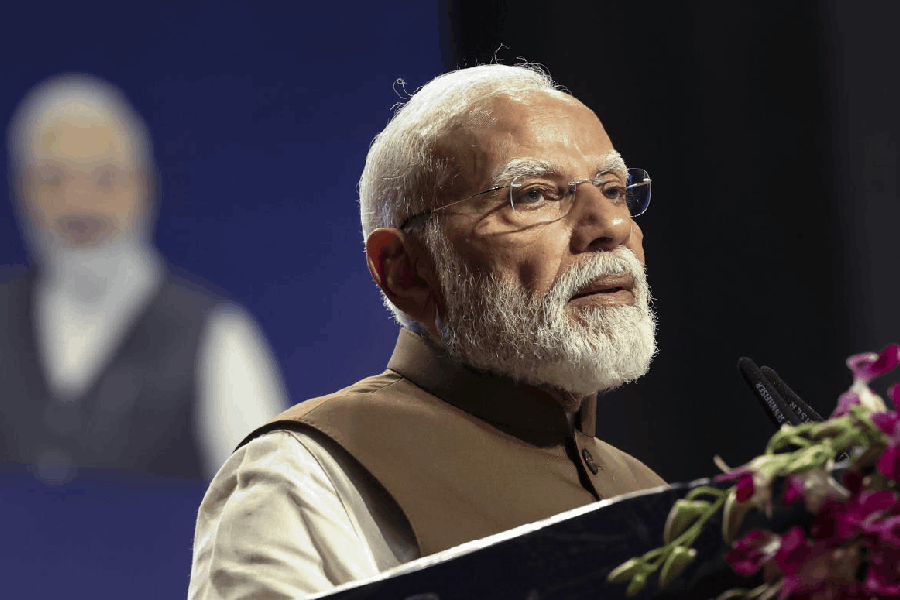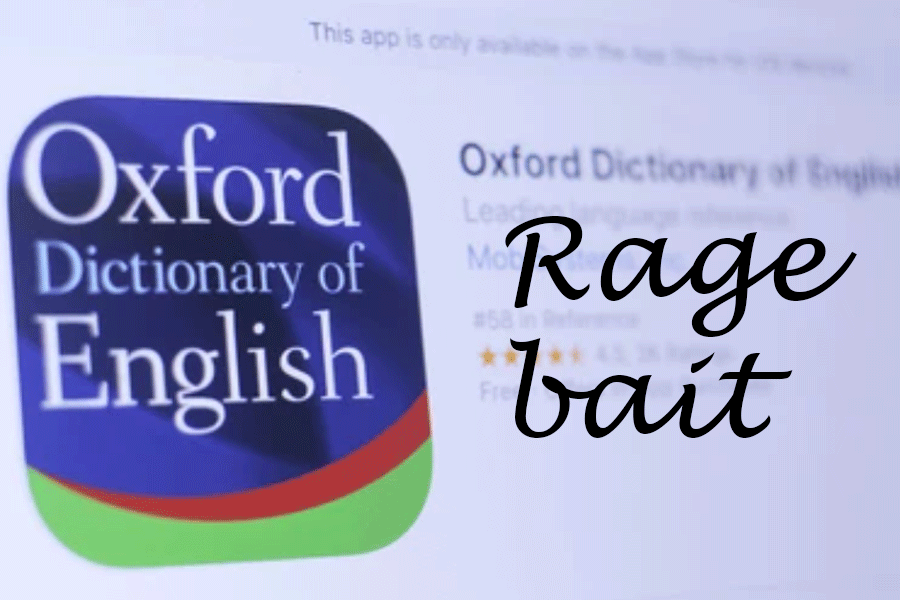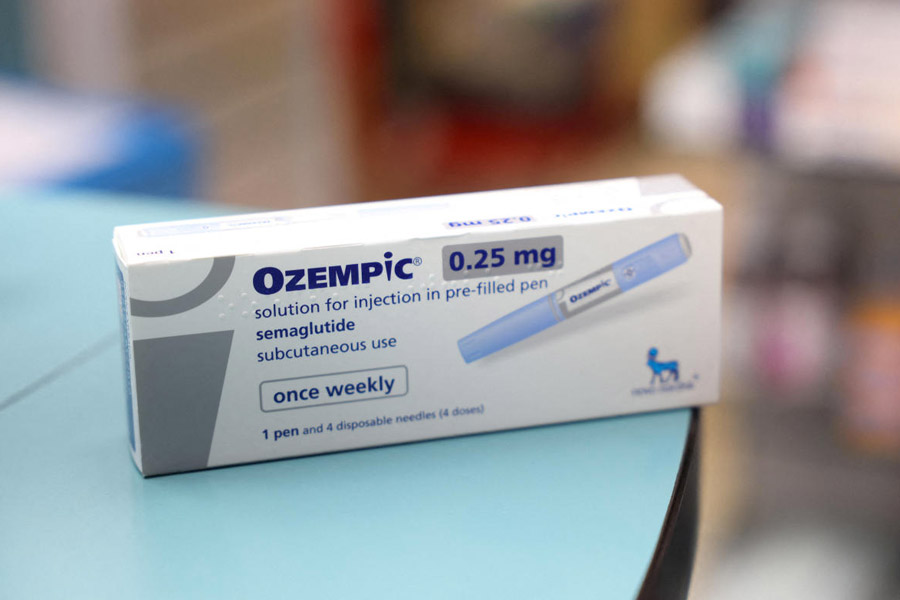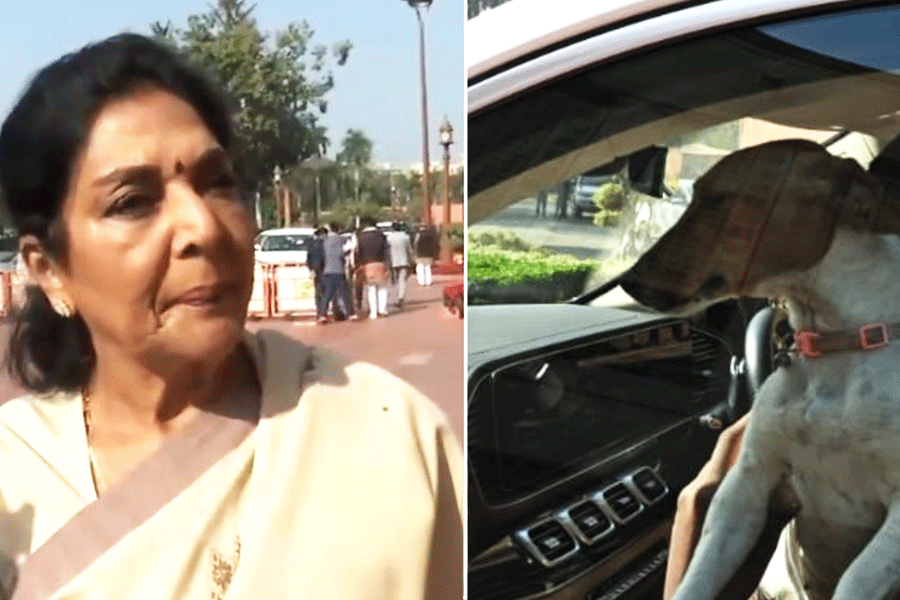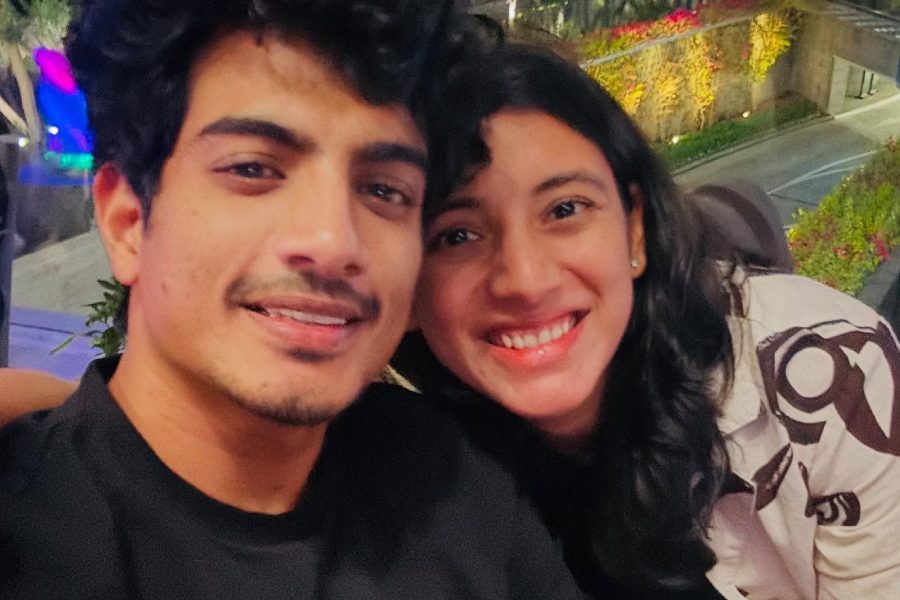 |
| Security forces stand guard in Lucknow on Sunday ahead of the verdict. (PTI) |
What are the issues on which the high court may give its verdict?
There are 28 issues, some of which are:
![]() Whether the demolished structure was a mosque as claimed by the plaintiffs (Muslim organisations). If it was:
Whether the demolished structure was a mosque as claimed by the plaintiffs (Muslim organisations). If it was:
a) When was it built and by whom — Mughal emperor Babar or his Awadh governor, Mir Baqi Tashqandi?
b) Was it built on the site of a Hindu temple after demolishing the latter?
![]() If the structure was a mosque, whether Muslims had prayed there from time immemorial
If the structure was a mosque, whether Muslims had prayed there from time immemorial
![]() Whether Muslims had been in possession of the property openly and continuously from 1528 (when the mosque was allegedly built), and with the knowledge of the defendants and Hindus in general
Whether Muslims had been in possession of the property openly and continuously from 1528 (when the mosque was allegedly built), and with the knowledge of the defendants and Hindus in general
![]() Whether the plaintiffs were in possession of the plot till 1949 and if they were dispossessed the same year
Whether the plaintiffs were in possession of the plot till 1949 and if they were dispossessed the same year
![]() Whether the suit was filed too late
Whether the suit was filed too late
![]() Whether the Hindus have earned the right to pray at the site through adverse and continuous possession (however, the concept of an encroacher gaining land rights through long possession is now falling out of judicial favour)
Whether the Hindus have earned the right to pray at the site through adverse and continuous possession (however, the concept of an encroacher gaining land rights through long possession is now falling out of judicial favour)
![]() Whether the plot is Ram’s birthplace
Whether the plot is Ram’s birthplace
![]() Whether Hindus have worshipped the site as Ram’s birthplace from time immemorial
Whether Hindus have worshipped the site as Ram’s birthplace from time immemorial
![]() Whether the idols and other objects of worship were placed in the structure on the night of December 22-23, 1949, or whether they had been there before that
Whether the idols and other objects of worship were placed in the structure on the night of December 22-23, 1949, or whether they had been there before that
![]() Whether the Ram Chabutra — the raised platform adjacent to the disputed structure — as well as the Bhandar and Sita Rasoi (structures installed by Hindus over the years) were demolished along with the main structure
Whether the Ram Chabutra — the raised platform adjacent to the disputed structure — as well as the Bhandar and Sita Rasoi (structures installed by Hindus over the years) were demolished along with the main structure
![]() Whether the land adjoining the structure on its east, north and south housed an ancient graveyard and a mosque
Whether the land adjoining the structure on its east, north and south housed an ancient graveyard and a mosque
![]() Whether the structure is “landlocked” and cannot be reached except by passing through Hindus’ places of worship around it
Whether the structure is “landlocked” and cannot be reached except by passing through Hindus’ places of worship around it
![]() Whether no mosque can come into existence on the plot in view of Islamic tenets (because idols have been placed there)
Whether no mosque can come into existence on the plot in view of Islamic tenets (because idols have been placed there)
![]() Whether the structure could not legally be a mosque since it did not have minarets
Whether the structure could not legally be a mosque since it did not have minarets
![]() Whether it could not be a mosque as it is hemmed in by a graveyard from three sides (it may actually not be so hemmed in; besides only if it were surrounded by a graveyard on all four sides could there be an issue)
Whether it could not be a mosque as it is hemmed in by a graveyard from three sides (it may actually not be so hemmed in; besides only if it were surrounded by a graveyard on all four sides could there be an issue)
![]() Whether, after the demolition, it can still be called a mosque
Whether, after the demolition, it can still be called a mosque
![]() Whether Muslims can use the open ground at the site as a mosque to offer prayers following the demolition of the structure
Whether Muslims can use the open ground at the site as a mosque to offer prayers following the demolition of the structure
![]() Whether and what relief, if any, the plaintiffs are entitled to
Whether and what relief, if any, the plaintiffs are entitled to
Does the court need to pass a judgment on each issue?
Courts have to frame issues depending on the pleas in a suit, but they need not rule on them all. In this case, the court seems to have left no avenue unexplored, even directing excavation of the site to unearth evidence. Still, it may not rule on a question if there is not enough evidence to decide it.
What are the legal options before parties in the case that may feel aggrieved by the verdict?
Any party can challenge the verdict in the Supreme Court which, if it admits the appeal, will immediately order status quo. The Supreme Court’s decision will be final unless one of the parties seeks a review — by the same bench — or file a curative petition to an apex court bench of at least five judges.
Where does the government come in? Does it have the responsibility of implementing the court order?
The Centre is the statutory receiver of all the disputed 67.7 acres in Ayodhya. It acquired the land on January 7, 1993, through the Acquisition of Certain Area at Ayodhya Act.
The Centre will therefore be called on to implement the verdict unless the court directs otherwise, or unless the verdict is challenged and the Supreme Court imposes status quo. However, the Centre can cite law-and-order problems to stall immediate implementation.
In an earlier case, when demolition of shrines (mostly mosques) by the Ahmedabad Municipal Corporation triggered riots in Gujarat, the Centre had moved the apex court and got an immediate stay on the demolition drive that the state had started at Gujarat High Court’s behest.
If tempers flare over the verdict, can the government challenge it in court? Can it enact a law in Parliament to bypass the verdict?
The Centre cannot challenge the verdict in court because it is not a party to the case. The jury is out on whether it can enact a law to undo the court order as it had done in the Shah Bano case of 1986 to invalidate a Supreme Court judgment.
The RSS and the Vishwa Hindu Parishad (VHP) have already demanded a law that will recognise Hindus’ “right” to the plot and hand it over to them so they can build a Ram temple there.
Some legal experts say there is a difference between the Shah Bano and Ayodhya cases. They argue the apex court’s 1986 ruling (on the maintenance due to divorced Muslim women) was based on an interpretation of Muslim personal law. The Ayodhya ruling is expected to be based on the court’s findings and not on interpretation. So enacting a law to bypass it may be problematic, if not impossible, they say.
The Uttar Pradesh (UP) government is one of the defendants, though, and, technically, can challenge the verdict.
How many title suits are involved in the case?
Five. But there are dozens of other petitions — for access, right to worship or pray, writ petitions and the like.
Who are the dramatis personae?
● Retired bank official Rajendra Singh Visharad, son of the late Gopal Singh Visharad who filed one of the first two suits in 1950 (see history of the Ayodhya case below).
● Mahant Ram Das, chela of the Paramhansa Ramchandra Das, who filed the other of the first two suits.
● Nirmohi Akhara, which filed the third suit.
● The Sunni Central Wakf Board, which filed the fourth suit.
● The representatives of Deoki Nandan Agrawal, a retired judge of Allahabad High Court who filed the fifth suit.
What about the VHP, Ramjanmabhoomi Nyas and the Babri Masjid Action Committee (BMAC)?
They were never direct parties to the case but the BMAC has become “a litigant by proxy”.
On February 1, 1986, the VHP floated the Ramjanmabhoomi Nyas for “renovation, reconstruction and development” of Ram’s “birthplace” and to build a temple. It was headed by Jagadguru Ramanandacharya Swami Shivaramacharya of Kashi (Varanasi). The trustees included Mahant Avaidyanath of Gorakhpur’s Gorakshpeeth, prominent Ayodhya mahants like Swami Nritya Gopal Das and the Paramhansa Ramchandra Das, and VHP leaders Ashok Singhal and Vishnu Hari Dalmiya.
The Paramhansa took over as Nyas head in 1992. After his death, Nritya Gopal Das became president.
The BMAC was formed in 1986 shortly after the Nyas’s birth. Its original patrons, Sultan Salauddin Owaissi and Suleiman Sait (former MPs) and Abdullah Bukhari (former Shahi Imam of Delhi’s Jama Masjid), are dead. Its conveners were former Samajwadi UP minister Azam Khan, former MP Syed Shahabuddin, All-India Muslim Personal Law Board member Zafaryab Jilani and Urdu journalist Jawed Habib.
Among them, Jilani alone is soldiering on in the case as the lawyer for the Sunni Central Wakf Board. The Lucknow-based Jilani had shot into prominence when he advised the personal law board on the Shah Bano ruling.
Will the verdict have any bearing on the demolition cases against Advani and the other Sangh parivar leaders?
No. Those criminal cases will continue to be heard by the designated CBI court.
Some of the issues before the court are historical or mythological. Do courts usually rule on such matters?
The Supreme Court had in 1994 refused to go into the case’s archaeological or historical aspects, preferring to return a presidential reference on this.
Jurist Nani Palkhivala has cited several reasons why courts should not rule on historical or archaeological matters:
● Courts are not qualified by training or experience to do so. They can only deal with questions of law or of fact.
● One arm of the state cannot shuffle its constitutional responsibility to another. In Palkhivala’s words: “The failure of the political process can never be either concealed or supplemented by any reference to any court.”
● If courts enter the political arena, their image and status would be undermined.
● Large organisations with millions of followers have openly said they would not be bound by the court verdict.
Constitutional lawyer Rajeev Dhavan, however, says the historical issues are not important for the title suit: more relevant are issues such as who has the deeds, etc. But, he says, if there is some evidence the court may just record it to try and get one or the other party to back off.
Dhavan says the BMAC had assured the Nyas in 1991-92 that it would back off if the other side could prove that the Ayodhya site was indeed where Ram was born or that there was a temple there in the 1520s.
Have courts ever decided similar cases?
Yes, for instance:
● In 1940, the Privy Council had decided on the Shahid Ganj Masjid in Lahore, taken over by Sikhs in 1762. Although three courts had successively ruled it was a mosque, the council held that Muslims had lost the title by adverse possession. It is still a gurdwara.
● In the Babri-Ramjanmabhoomi case, a Faizabad court had in 1885 dismissed a prayer by Hindus to build a Ram temple next to the disputed structure. Dhavan says that verdict should have been enough. However, the second set of cases since 1950, and the subsequent interim orders and status quo orders, etc, means Allahabad High Court has to take all this into account.
Compiled by Samanwaya Rautray and Radhika Ramaseshan
The history: 125th year of original suit, diamond jubilee of the current case
When did the case start?
The first suit goes back to 1885, the year the Indian National Congress was born. The case was revived in 1950.
In 1885, the Faizabad deputy commissioner refused to let Mahant Raghubar Das build a temple on land adjoining the disputed structure. Das then filed a title suit in a Faizabad court against the secretary of state for India, seeking permission to build a temple on the Chabutra on the outer courtyard of the disputed structure.
His suit was dismissed on the ground that the event (alleged demolition of an original Ram temple in 1528) had occurred over 350 years earlier, and so it was “too late now” to remedy the grievance. “Maintain status quo. Any innovation may cause more harm than any benefit,” the court said.
How was the case revived in 1950?
On December 23, 1949, an FIR was lodged alleging some 50-60 people had broken the locks of the structure and
installed a Ram idol and several other Hindu idols and articles of worship.
Six days later, the structure was attached and placed in the custody of receiver Priya Dutt Ram, appointed by the Faizabad additional city magistrate. The magistrate provided a scheme of management under which the property was administered. The receiver ensured worship of the idol through a pujari.
This is how the current case started a year later:
Jan 16, 1950: Hindu Mahasabha member Gopal Singh Visharad and the Paramhansa Ramchandra Das, keeper of the Digambar Akhada in Ayodhya, each file a civil suit in the Faizabad court against some district officials and Muslims. They seek an injunction against removal of the idols and demand permission for uninterrupted puja and darshan. An interim court order says the idols should remain in place.
Both Visharad’s and the Paramhansa’s suits are part of the current case.
Later that year, lawyer Umesh Chandra Pandey appeals that the gates be unlocked and free entry allowed for puja and darshan. This, however, is not a title suit.
April 26, 1955: Court confirms interim order, letting idols remain in place.
Dec 17, 1959: Nirmohi Akhara, a philanthropic body, and its mahant file suit against receiver and UP government seeking delivery of the property to itself. This is the third title suit.
Dec 18, 1961: Sunni Central Wakf Board seeks declaration of the structure as a mosque, handover of the plot to itself, and removal of idols and other articles. This is the fourth suit.
Jan 6, 1964: The four suits are combined
1984: VHP begins campaign to build Ram temple at the site
Feb 1, 1986: District judge accepts Pandey’s 36-year-old plea to allow darshan and puja and directs UP government to open the locks. VHP forms the Ramjanmabhoomi Nyas.
Feb 1986: Prominent Muslim leaders form the Babri Masjid Action Committee.
May 12, 1986: Sunni Central Wakf Board challenges the February 1 order.
Dec 16, 1987: UP govt seeks transfer of all suits from Faizabad court to Allahabad High Court. This is soon done.
July 1989: Fifth title suit filed by retired high court judge Deoki Nandan Agrawal on behalf of Ram Lalla (young Ram) Virajman (installed), making Ram a party to the case.
Aug 14, 1989: High court restrains political parties from disturbing status quo at the disputed structure.
Oct 25, 1989: Court allows UP govt to take possession of land around the structure but later, on an appeal from Muslim groups, sets aside the acquisition of the 2.77 acres adjacent to the disputed structure. Prohibits permanent construction. UP govt still has 42.09 acres around the 2.77 acres.
Nov 10, 1989: Congress govt at Centre allows shilanyas by VHP outside the 2.77 acres. Foundation for Ram temple laid.
March 20, 1992: UP’s Kalyan Singh (BJP) govt transfers 42.09 acres to a private trust, the Ramjanmabhoomi Nyas. VHP and RSS are trustees.
Nov 27, 1992: Supreme Court permits symbolic kar seva on UP govt’s assurance.
Dec 6, 1992: Structure demolished and idol “reinstalled”.
Jan 1, 1993: High court orders meaningful darshan on VHP plea
Jan 7, 1993: Centre acquires the entire disputed land through an act. Gets President to ask Supreme Court’s opinion on whether there was an ancient Hindu temple at the site and promises to do everything to implement the court’s opinion.
Oct 24, 1994: Apex court in a majority decision declines to consider the presidential reference and returns the case to the Lucknow bench of Allahabad High Court.
March 13-14, 2002: High court bans all religious activity, symbolic or actual, at the site.


